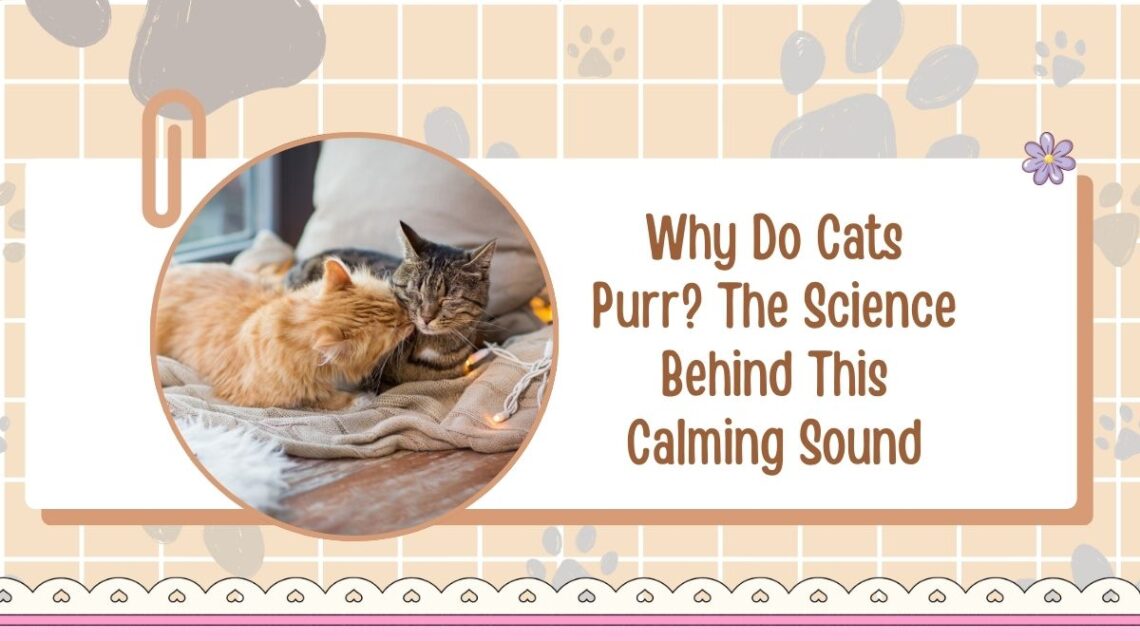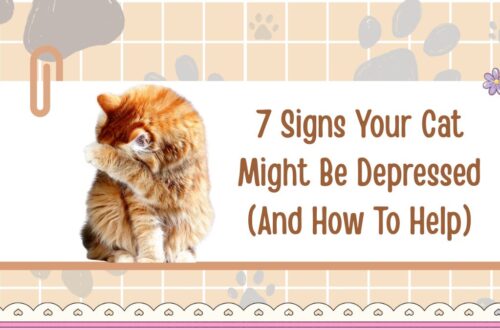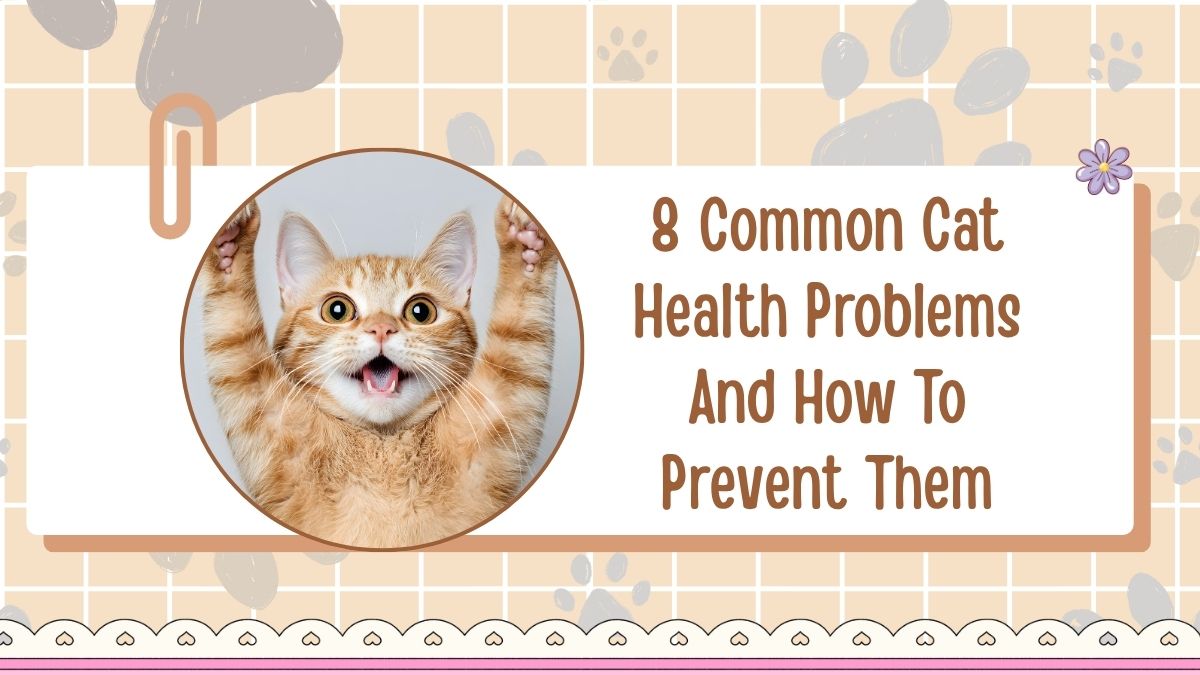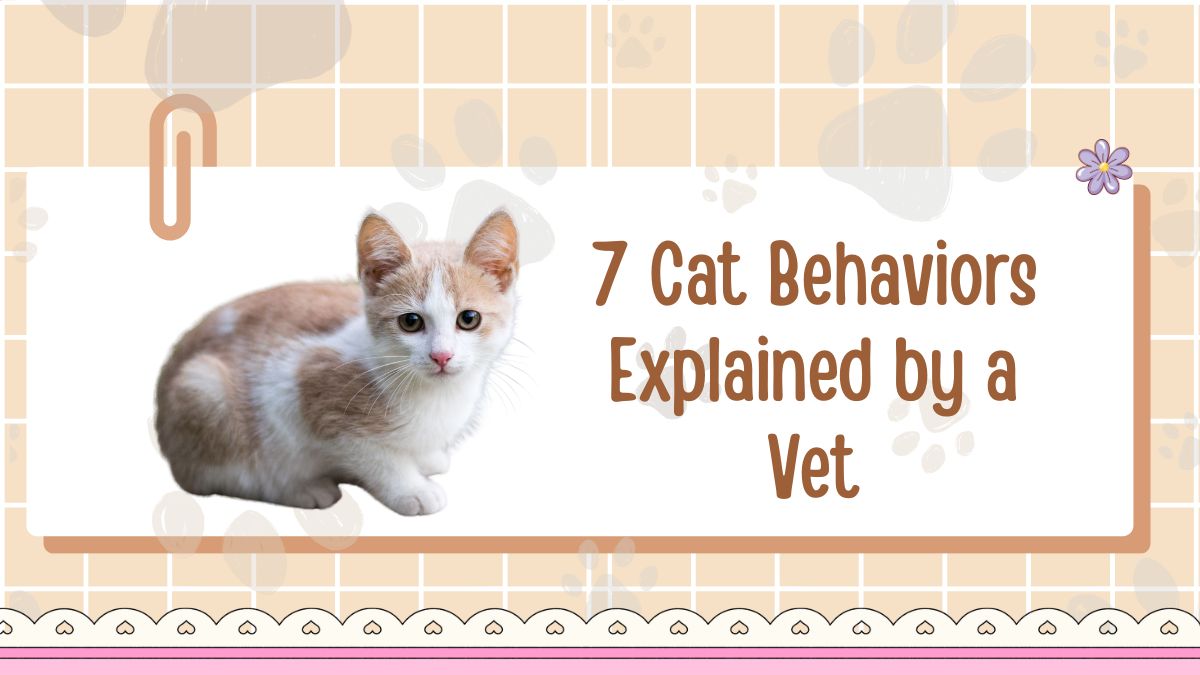Cats purr when they’re cozy on your lap—but also at the vet, while nursing, and even right before mealtime. That soft engine-like vibration is one of the most distinctive sounds in the animal world, yet scientists are still refining how, and why, it happens.
Here’s the latest, research-backed guide to the science of cat purring—from the biomechanics inside the throat to the frequency range linked to possible health effects and the different types of purrs you’ll hear at home.
How Cats Purr: From Larynx Mechanics To Airflow Physics
For decades, textbooks said cats purr by rapidly contracting the intrinsic laryngeal muscles (especially muscles that open and close the glottis), creating rhythmic pulses during both inhalation and exhalation. That’s still partly true—but recent work has updated the picture.
In 2023, researchers showed that cat larynges can generate purr-like low frequencies with airflow alone, even without cyclical nerve/muscle input, thanks to a special “pad” of connective tissue embedded in the vocal folds.
This supports a myoelastic-aerodynamic mechanism: steady airflow sets those tissues vibrating at low frequencies, and the system can “self-oscillate” to produce the classic purr.
What stays consistent across studies is the frequency band: most domestic cats purr between ~25–150 Hz, and they can maintain this on both inhale and exhale, giving the purr its uninterrupted, motor-like quality.
Do Big Cats Purr?
The traditional rule-of-thumb said small cats purr, big cats roar. Anatomy does play a role: differences in the hyoid apparatus and vocal fold tissues underlie whether a species roars, purrs, or produces other vocalizations.
The reality is nuanced—cheetahs, for instance, purr but don’t roar—and some “purr-like” sounds in Panthera aren’t true purrs by strict definitions.
Ongoing work on hyoid form and function continues to refine this boundary, and even fossil lineages (like sabertooths) are being re-evaluated with shape-based analyses.
Why Cats Purr: Comfort, Communication, Coping—and Food Requests
Cats purr in more contexts than “I’m happy.”
- Contentment & Bonding: Relaxed social contact—grooming, petting, or snoozing—commonly elicits a low, even purr. This likely evolved as a bonding and reassurance cue between kittens and mothers; kittens are able to purr during nursing, which helps them maintain contact without loud meows that might attract predators. (The mammalian origin story of purring behaviors around infant-care sensitivity shows up elsewhere in feline signaling too.)
- Self-Soothing & Pain Modulation: Cats purr when stressed, injured, or at the vet. Many behaviorists interpret this as self-soothing—a strategy to reduce arousal and potentially modulate discomfort. While the precise neurochemical pathways are still being mapped, the behavior’s persistence in adverse contexts suggests a coping function.
- “Solicitation Purr” (The Food Purr): When seeking food from humans, some cats use a special purr that includes a higher-frequency “cry”—acoustically similar to portions of a human infant’s cry (~300–600 Hz)—making it hard for us to ignore. Listeners rate these purrs as more urgent than typical contented purrs, and when the “cry” component is removed, the urgency drops. This is a clever communication tweak your cat may deploy around breakfast time.
The Numbers: Frequencies, Loudness, And Patterns
- Frequency Range: ~25–150 Hz (fundamental and dominant energy).
- Respiration: Bidirectional—during inhalation and exhalation—creating the continuous effect.
- Production: Likely a hybrid of laryngeal muscle control and passive tissue vibration powered by airflow; newer experiments show neural-input-free purr generation at ~25–30 Hz in isolated larynges.
Can Purring Help Healing? What The Evidence Actually Says
You’ve heard that purrs can heal bones. Here’s the careful, up-to-date view:
- Biomechanics & Medicine Overlap: Mechanical stimulation in the ~25–50 Hz band has been studied in orthopedics, physical therapy, and tissue engineering for its potential to promote bone growth, density, and fracture healing, and to stimulate muscles—frequencies that overlap with typical cat purrs. This overlap is why purring is often linked to healing hypotheses.
- Direct Proof In Cats/Humans: While in vitro and device-based studies support beneficial effects of low-frequency vibrations, direct, controlled trials showing that a cat’s purr speeds healing in cats or humans remain limited. The idea is biologically plausible but not definitively proven; treat it as a promising correlation, not a prescription.
Bottom line: purring may align with therapeutic vibration ranges, which could help explain why cats purr when injured or stressed—but don’t replace veterinary care with vibes.
Types Of Purrs And What They Tell You
Below is a practical guide to recognizing purr types, their contexts, and the signals you can take from them.
| Purr Type | Typical Context | Acoustic Features | Approx. Frequency Band | What It Likely Signals |
|---|---|---|---|---|
| Resting/Contented Purr | Lounging, petting, grooming, cuddling | Even, low-frequency, constant amplitude | ~25–150 Hz | Relaxation, social bonding, “I feel safe.” |
| Solicitation Purr | Around mealtimes, at your feet, looking at you | Embedded higher-frequency “cry”; sounds more urgent | Low band + ~300–600 Hz peaks | “Feed me”; higher urgency perceived by humans. |
| Stress/Discomfort Purr | Vet visits, illness, injury, new environment | Can be softer or faster; paired with other stress signals (flattened ears, crouching) | Overlaps usual purr band | Self-soothing/cope, potential pain modulation; not always “happy.” (Inference from contexts in literature) |
| Maternal/Neonatal Purr | Nursing kittens; early development | Low, continuous; kittens also purr while nursing | ~25–150 Hz | Bonding, orientation, quiet contact without attracting attention. (Inferred from developmental signaling studies) |
| Species-Limit Purr | Cheetahs (purr, don’t roar); big “roaring” cats mostly don’t purr | Species-specific | Species-specific | Anatomy governs repertoire; roaring adaptations often preclude true purr. |
What Your Cat May Be Getting From Purring
- Calming Feedback Loop: Purring coincides with lower arousal states and can help a cat shift toward rest-and-digest, especially during social contact or recovery.
- Energy Efficiency: The passive-vibration capacity shown in 2023 helps explain how cats can purr for long bouts with minimal effort—useful for bonding and coping.
- Subtle Communication: The solicitation purr shows cats can fine-tune the sound to target human sensitivities—a remarkable example of interspecies communication.
How To “Read” Purring In Real Life
- Scan The Whole Cat: A purr plus loose body, slow blinks, kneading signals contentment. A purr plus tense posture, tucked tail, dilated pupils suggests stress or pain—call your vet if something seems off.
- Watch Mealtime Timing: A purr that ramps up near food time, especially with a more urgent edge, is likely a solicitation purr.
- Don’t Over-Interpret Healing Claims: The frequency overlap with therapeutic vibrations is intriguing, but evidence is not a substitute for treatment. Use purring as one data point in your cat’s comfort and recovery picture.
Advanced Science Corner: From Hyoid To Vocal Fold “Pads”
- Hyoid Apparatus: In roaring species, portions of the hyoid are more flexible, supporting loud, low roars but likely preventing true purring. Purring species have a more rigid hyoid that stabilizes the larynx for low-frequency oscillations.
- Vocal Fold Architecture: The 2023 experiments highlight a connective-tissue “pad” in the vocal folds that can oscillate with steady airflow, generating 25–30 Hz fundamentals without neural cycling—a major update to purr biomechanics.
The cat purr is a multifunctional, low-frequency signal that blends communication and coping. Modern research suggests the larynx can produce purr frequencies with airflow alone, aided by special vocal fold tissues, while classic neural control still likely modulates the sound in life.
Across ~25–150 Hz, cats purr when content, when asking for food (sometimes adding an infant-like “cry”), and even when stressed or injured—possibly tapping into therapeutic vibration ranges that align with emerging biomedical insights.
Enjoy the sound for what it reliably conveys—connection and calm—and read the whole-cat context to know when it’s time for an extra cuddle, a snack, or a call to the vet.
FAQs
Most small felids (including domestic cats) purr, but many big cats that roar do not produce a true purr; cheetahs are a notable purring exception. Anatomy—especially the hyoid and vocal folds—drives these differences.
Both are possible. Context is key. A relaxed body and soft social behaviors point to contentment; a purr during illness, injury, or a vet visit can be self-soothing. If you suspect pain, call your vet.
Low-frequency vibration (25–50 Hz) is studied for bone and muscle benefits and overlaps with purrs, but direct clinical proof that purring alone heals bones in cats or humans is limited. Consider it supportive—not a replacement for care.






